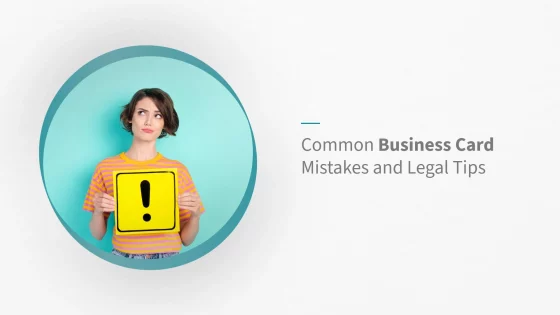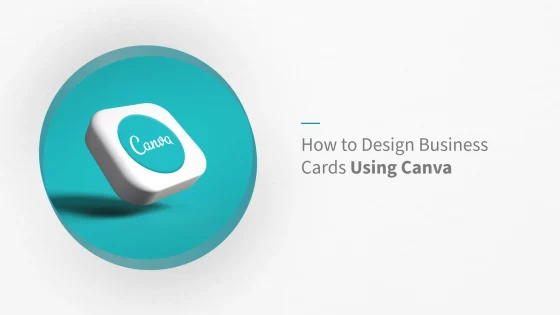Where to Use Business Cards for Best Results
Despite the rise of digital networking, business cards remain one of the most effective tools for professionals in the UK—when used strategically. More than just a way to share contact details, they help reinforce your brand, make a memorable impression, and open the door to future opportunities. In this article, you’ll discover the best places to use business cards in 2025, explore international etiquette insights, and discover modern design ideas that make your cards impossible to ignore.
Why Business Cards Still Work in 2025
Digital alternatives are widely used, but business cards continue to offer advantages that virtual tools can’t fully replicate. They provide an immediate, tactile connection that strengthens first impressions and helps ensure your details are remembered.
- Tangible connection – A physical card helps build trust and credibility during conversations.
- Professional presentation – A well-designed card reflects your attention to detail and brand consistency.
- Offline readiness – Business cards are useful in places where Wi-Fi or digital access isn’t practical.
According to Ipsos UK, fewer than 25% of adults still actively use business cards, yet those who do tend to stand out in traditional networking environments[source].

The Best Places to Hand Out Business Cards in the UK
Knowing where to distribute your business cards can make all the difference. From formal business events to chance encounters, timing and context are everything.
Networking Events and Conferences
- Business expos and trade shows
- Industry panels, forums and exhibitions
- Local business meetups and breakfast clubs
Client Meetings and Consultations
- Service briefings, discovery calls or site visits
- Post-pitch leave-behinds or presentation handovers
Community Spaces and Casual Interactions
Cards don’t need to be handed out only at professional venues. Many successful professionals generate leads through everyday interactions in more relaxed environments.
- Local cafés and coworking spaces
- Library and community centre noticeboards
- Train journeys, shared taxis, or casual introductions
Business Card Etiquette Around the World
If you work across borders or attend international trade shows, understanding regional etiquette can help you avoid costly cultural missteps. Here’s how expectations vary by region:
Asia
- Japan – Present your card with two hands, bow slightly, and take time to read the card you receive. Keep it on the table during the meeting.
- China – Cards should be dual-language (English and Simplified Chinese). Present and receive with both hands. Never write on the card.
- India – Use the right hand only. Handing over a card early in the conversation is standard. Always carry plenty of copies.
North America
- USA – Exchange is casual. Hand out cards once a conversation becomes business-relevant. Writing on the back is acceptable.
- Canada – Bilingual cards (English/French) are appreciated in some provinces. Otherwise, US etiquette generally applies.
Europe
- France – Cards should include French on one side. Your surname in uppercase is common etiquette. Job applicants may also use business cards.
- Germany – Cards are seen as private. Give only to those with whom you’ve established a meaningful business relationship.
- UK & Ireland – Etiquette is relaxed. Cards can be handed out at any point, but keeping them neat and professionally presented is expected.
Middle East
- Always use your right hand to give and receive cards.
- Business card exchanges are relaxed in the UAE and Bahrain, but it’s essential to have plenty of cards on hand.
Being aware of these regional customs shows cultural sensitivity and positions you as a respectful, well-prepared professional.
Creative and Strategic Business Card Design Trends
Today’s business cards go far beyond name and number. Strategic design choices can help you stand out in a competitive marketplace and leave a lasting impression.
1. Experimental Shapes and Sizes
- Rounded corners – Softer, approachable aesthetic with a premium finish.
- Square or slim cards – Compact, modern layouts that challenge convention.
- Vertical orientation – Distinctive format that adds visual flow to logos and type.
- Die-cut business card shapes – Custom silhouettes like your logo or product shape add novelty.
2. Typography and Simplicity
- Oversized type – Emphasise your name, title or core message boldly.
- Minimal layouts – Clean lines and negative space that speak to modern sophistication.
- Typographic identity – Use custom or hand-lettered fonts to reinforce branding.

Interactive, Tactile and Sensory Finishes
Design isn’t just visual—it’s physical. Tactile elements and unexpected interactivity make your card memorable even after it’s put away.
3. Texture and Depth
- Embossing or debossing – Add dimension through raised or recessed print.
- Foil accents – Metallic elements (like gold or copper) enhance premium appeal.
- Painted or coloured edges – Subtle but effective pops of colour that stand out in a stack.
4. Material Innovation
- Textured paper stocks – Linen, cotton or recycled card create a unique tactile experience.
- Transparent plastic or wood veneer – Materials that reflect innovation or sustainability.
- Thicker cardstocks – Durable and impressive, often used for premium services or creative fields.
Personalisation and Interactive Features
A small detail can make a big difference. Adding an element of personal interaction to your cards helps build genuine connections.
- Foldable cards – Turn your card into a tent or booklet with added info, testimonials or images.
- Cut-outs or pop-ups – Create dimension with simple engineering or surprise reveals.
- Sleeves or holders – Add premium flair by wrapping your card like a gift.
- Handwritten elements – Leave space to write a thank-you or note that personalises the interaction.
- Multiple designs – Create variations for different audiences or to reflect different services.
These small enhancements make your cards not only beautiful, but meaningful and memorable.
Make Every Card Count
Business cards are more than just a formality—they’re a reflection of how you communicate, what your brand represents, and how serious you are about building connections.
Whether you’re preparing for a conference, closing a sale, or meeting someone in a lift, the right business card can make you unforgettable.
Looking for custom-printed business cards that make an impression?
Explore our full range of business stationery printing with free UK delivery →


